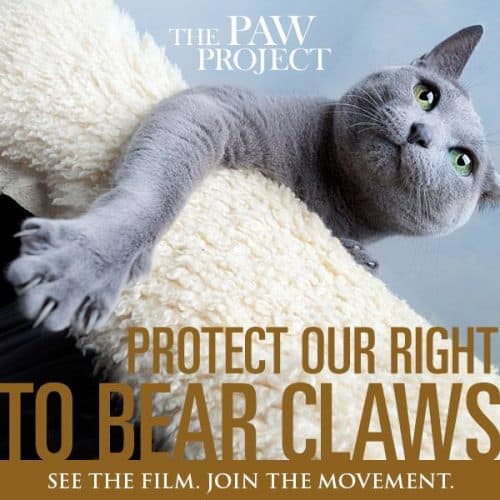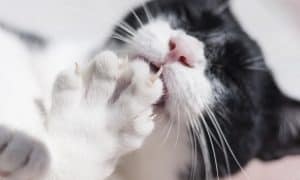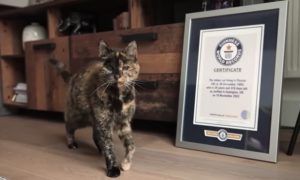 10 years ago, West Hollywood California became the first city in the United States to ban the practice of declawing cats. A practice which is widely regarded in other countries as not only unnecessary, but cruel and inhumane. The Paw Project is on a mission to have the rest of the country follow suit. As of today, Los Angeles, San Francisco, Santa Monica, Beverly Hills, Berkeley, Culver City, and Burbank have also banned declawing.
10 years ago, West Hollywood California became the first city in the United States to ban the practice of declawing cats. A practice which is widely regarded in other countries as not only unnecessary, but cruel and inhumane. The Paw Project is on a mission to have the rest of the country follow suit. As of today, Los Angeles, San Francisco, Santa Monica, Beverly Hills, Berkeley, Culver City, and Burbank have also banned declawing.
The Paw Project educates the public about why declawing is inhumane. Many people, including animal lovers, do not realize that declawing is a surgical procedure in which the animal’s toes are amputated at the last joint. A portion of the bone, not just the nail, is removed.
Unlike humans, where the nail grows out of our skin, a cat’s claws grow directly from the bone. So when a cat is declawed, their bone has to be surgically removed – not just their claws.
Declawing may result in permanent lameness, arthritis, and other long-term behavioral and physical complications. The practice, although common in the United States, is actually illegal in many countries. Great Britain’s Royal College of Veterinary Surgeons declared declawing “unnecessary mutilation.”
If declawing is so bad, then why is it so common?
According to The Paw Project:
It seems that 25%–43% of all cats in American homes are declawed. The reason for this high number is that many veterinarians actively market and recommend the procedure without disclosing the details of the procedure to their clients with cats. Others perform declawing unquestioningly. Many people with cats don’t understand that declawing is amputating the bones and think they are doing “all the right things” for their beloved animal.
A survey of twenty Los Angeles area veterinary clinics, reported in the February-March 2003 issue of The Pet Press, found that 75% agreed to perform declawing without question and without any attempt to establish a medical, behavioral, or any other indication to justify the procedure. Not only is declaw-on-demand the norm, the staff at veterinary clinics commonly encourage clients, whose cats are scheduled for spaying or neutering, to “supersize” the procedure by adding declaw surgery.
According to the Southern California Veterinary Medical Association (SCVMA), most veterinarians offer declawing and 5% make over $1000/hour performing the procedure. Clients who bring their cats to these veterinarians typically report that neither the nature of the procedure, complications, nor humane alternatives is ever discussed.
The Paw Project is a 501(c)(3) nonprofit organization who’s mission is to educate the public about the painful and crippling effects of feline declawing, to promote animal welfare through the abolition of the practice of declaw surgery, and to rehabilitate cats that have been declawed.
They’ve produced an hour-long movie that is an absolute eye-opening must-watch for any and all cat lovers. If you’re opposed to the practice of declawing or not, or if you simply don’t know the details of the practice – we are urging you to watch this important film. It’s a touching and heartbreaking documentary about a vet’s crusade to abolish the practice of declawing cats, her fight against the very deep pockets that keep this practice legal, and her mission to help the cats that have already been crippled by this surgery.
This movie will leave you feeling empowered that you can do something about it.
Watch The Paw Project on Netflix, iTunes, or Amazon and then join the fight today.



























